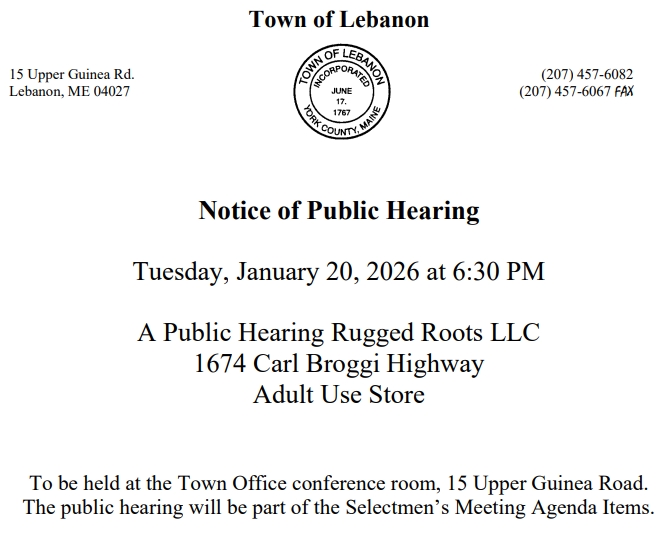With the gaps in test scores between low-poverty and high-poverty elementary schools growing by 15% to 20% during the COVID-19 pandemic, the personal-finance website WalletHub recently released its report on 2022's States with the Best and Worst School Systems as well as expert commentary.
In order to determine the best school systems in America, WalletHub compared the 50 states and the District of Columbia across 32 key measures of quality and safety. The data set ranges from pupil-teacher ratio and dropout rate to median standardized-test scores.
Quality & Safety of Schools in New Hampshire (1=Best; 25=Avg.):
- 6th - Math Test Scores
- 4th - Reading Test Scores
- 3rd - Pupil-Teacher Ratio
- 4th - Median ACT Score
- 22nd - % of Licensed/Certified Public K-12 Teachers
- 12th - Dropout Rate
- 9th - % of Threatened/Injured High School Students
- 1st - Existence of Digital Learning Plan
For the full report, please visit:
https://wallethub.com/edu/states-with-the-best-schools/5335
Expert Commentary
Does variation in per pupil spending explain most of the variation in school quality?
"Variation in per-pupil sometimes explains variation in school quality, but not always...For example, there is no question that a school that spends $5,000 per student cannot provide as many educational opportunities as a school that spends $25,000 per student...When schools lack funding sufficient to provide basics for students (up-to-date textbooks, access to technology, a safe building conducive to learning, etc.) students suffer. However, once basic necessities are met for students, more money does not always lead to a direct increase in student outcomes...When students come to school having had access to an educationally supportive community (access to pre-school programs, opportunities for extracurricular learning, museums, educational camps, etc.) they are at a distinct advantage over students who have not had access to these things. Thus, increasing school quality really involves increasing what is available to entire communities."
Christine Kiracofe, Ed. D. - Professor & Director of the Higher Education Ph.D. Program, Purdue University
"Idaho, where I live and work, is at the bottom of the States in per-pupil spending but is in the middle as far as providing quality education with higher test scores, college attendance, and overall well-educated students. So yes, I do think per-pupil expenditures correlate with higher [dollars] to higher scores. However, it also depends on the quality of teachers, parent support, top-notch school facilities, and many other factors."
Richard Bauscher, Ed.D. - Clinical Associate Professor, University of Idaho
What can state and local policymakers do to improve their school systems without raising taxes?
"School leaders should focus on research-based, strategically focused initiatives that will likely provide the greatest return on investment. Resource allocation - money, people, and time - should be aligned with the strategic initiatives. New initiatives suggest necessary changes, and school leaders must develop stakeholder buy-in and support for such initiatives. Also, research shows us that teacher quality, more than any other school-related variable, impacts student achievement. Therefore, implementing an aligned, research-based teacher recruitment, selection, and evaluation process can lead to school improvement. In addition, recruiting and hiring more teachers of color can improve outcomes for all students, especially students of color."
Tom Ramming, Ed.D. - Clinical Associate Professor Emeritus, University at Buffalo, Graduate School of Education
"Combine public services into 'hubs' to share budgeted funds. What most people consider 'school services' are really a complex network of public health services, mental health services, social work services, educational services, etc. There can be cost savings by combining service hubs at or near public schools. For example, communities could consider opening a public health clinic next to a public school or offering joint school/community mental health services. Also, apply for grant money: Local policymakers would be wise to enlist the help of a grant writer to help fund ambitious projects that could not otherwise be afforded. Grant money is never guaranteed, but in a zero-sum situation (i.e., assuming no new tax money is available) it is one potential source of additional income."
Christine Kiracofe, Ed. D. - Professor & Director of the Higher Education Ph.D. Program, Purdue University
In evaluating the best and worst school systems, what are the top 5 indicators?
"Broadly, five critical indicators would include funding equity (e.g., school infrastructure and student needs); academic outcomes (e.g., proficiency levels, promotion rates, graduation rates, etc.); non-academic outcomes (e.g., students' social-emotional wellness, attendance & absenteeism rates, extracurricular participation, etc.); teacher expertise & satisfaction; and parent engagement."
Kecia Hayes, Ph.D. - Senior Professorial Lecturer, American University
"There is no simple answer to this question. However, research suggests successful school systems prepare and graduate students with the skills necessary to be career and college ready. I would also add that we want graduates who will be well-informed, discerning, and contributing members of a just society. At a more granular level, indicators of success would be student attendance and discipline records - and the responses to them, graduation rates (with minimal variances), percentage of students going on to and graduating from institutions of higher learning, equitable student access and outcomes, teacher quality, principal quality, and parent as well as student engagement."
Tom Ramming, Ed.D. - Clinical Associate Professor Emeritus, University at Buffalo, Graduate School of Education
In order to determine the best school systems in America, WalletHub compared the 50 states and the District of Columbia across 32 key measures of quality and safety. The data set ranges from pupil-teacher ratio and dropout rate to median standardized-test scores.
Quality & Safety of Schools in New Hampshire (1=Best; 25=Avg.):
- 6th - Math Test Scores
- 4th - Reading Test Scores
- 3rd - Pupil-Teacher Ratio
- 4th - Median ACT Score
- 22nd - % of Licensed/Certified Public K-12 Teachers
- 12th - Dropout Rate
- 9th - % of Threatened/Injured High School Students
- 1st - Existence of Digital Learning Plan
https://wallethub.com/edu/states-with-the-best-schools/5335
Please let me know if you have any questions or if you would like to schedule a phone, Skype or in-studio interview with one of our experts. Feel free to embed this YouTube video summarizing the study on your website. You can also use or edit these raw files as you see fit. Full data sets for specific states and the District are also available upon request.
Best,
Diana Polk
WalletHub Communications Manager
(202) 684-6386
More from WalletHub
- Most & Least Educated States
- Best College Towns & Cities in America
- Best Back-to-School Credit Cards for Parents
- Best Credit Cards for Students
- Cities with the Most & Least Student Debt
Expert Commentary
Does variation in per pupil spending explain most of the variation in school quality?
"Variation in per-pupil sometimes explains variation in school quality, but not always...For example, there is no question that a school that spends $5,000 per student cannot provide as many educational opportunities as a school that spends $25,000 per student...When schools lack funding sufficient to provide basics for students (up-to-date textbooks, access to technology, a safe building conducive to learning, etc.) students suffer. However, once basic necessities are met for students, more money does not always lead to a direct increase in student outcomes...When students come to school having had access to an educationally supportive community (access to pre-school programs, opportunities for extracurricular learning, museums, educational camps, etc.) they are at a distinct advantage over students who have not had access to these things. Thus, increasing school quality really involves increasing what is available to entire communities."
Christine Kiracofe, Ed. D. - Professor & Director of the Higher Education Ph.D. Program, Purdue University
"Idaho, where I live and work, is at the bottom of the States in per-pupil spending but is in the middle as far as providing quality education with higher test scores, college attendance, and overall well-educated students. So yes, I do think per-pupil expenditures correlate with higher [dollars] to higher scores. However, it also depends on the quality of teachers, parent support, top-notch school facilities, and many other factors."
Richard Bauscher, Ed.D. - Clinical Associate Professor, University of Idaho
What can state and local policymakers do to improve their school systems without raising taxes?
"School leaders should focus on research-based, strategically focused initiatives that will likely provide the greatest return on investment. Resource allocation - money, people, and time - should be aligned with the strategic initiatives. New initiatives suggest necessary changes, and school leaders must develop stakeholder buy-in and support for such initiatives. Also, research shows us that teacher quality, more than any other school-related variable, impacts student achievement. Therefore, implementing an aligned, research-based teacher recruitment, selection, and evaluation process can lead to school improvement. In addition, recruiting and hiring more teachers of color can improve outcomes for all students, especially students of color."
Tom Ramming, Ed.D. - Clinical Associate Professor Emeritus, University at Buffalo, Graduate School of Education
"Combine public services into 'hubs' to share budgeted funds. What most people consider 'school services' are really a complex network of public health services, mental health services, social work services, educational services, etc. There can be cost savings by combining service hubs at or near public schools. For example, communities could consider opening a public health clinic next to a public school or offering joint school/community mental health services. Also, apply for grant money: Local policymakers would be wise to enlist the help of a grant writer to help fund ambitious projects that could not otherwise be afforded. Grant money is never guaranteed, but in a zero-sum situation (i.e., assuming no new tax money is available) it is one potential source of additional income."
Christine Kiracofe, Ed. D. - Professor & Director of the Higher Education Ph.D. Program, Purdue University
In evaluating the best and worst school systems, what are the top 5 indicators?
"Broadly, five critical indicators would include funding equity (e.g., school infrastructure and student needs); academic outcomes (e.g., proficiency levels, promotion rates, graduation rates, etc.); non-academic outcomes (e.g., students' social-emotional wellness, attendance & absenteeism rates, extracurricular participation, etc.); teacher expertise & satisfaction; and parent engagement."
Kecia Hayes, Ph.D. - Senior Professorial Lecturer, American University
"There is no simple answer to this question. However, research suggests successful school systems prepare and graduate students with the skills necessary to be career and college ready. I would also add that we want graduates who will be well-informed, discerning, and contributing members of a just society. At a more granular level, indicators of success would be student attendance and discipline records - and the responses to them, graduation rates (with minimal variances), percentage of students going on to and graduating from institutions of higher learning, equitable student access and outcomes, teacher quality, principal quality, and parent as well as student engagement."
Tom Ramming, Ed.D. - Clinical Associate Professor Emeritus, University at Buffalo, Graduate School of Education














